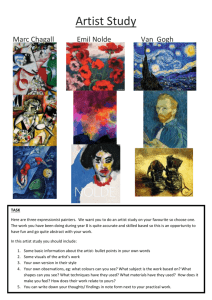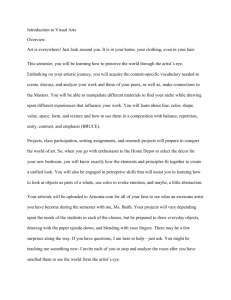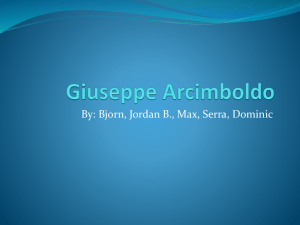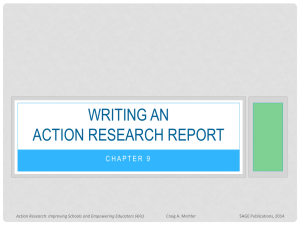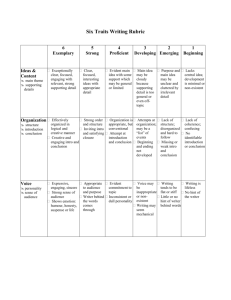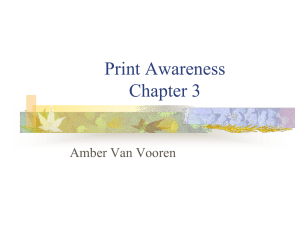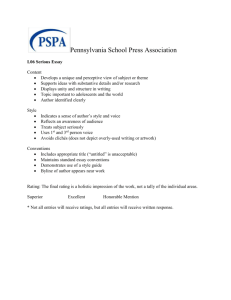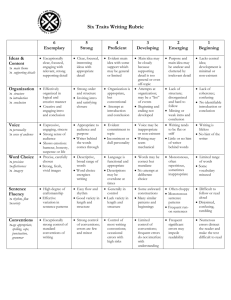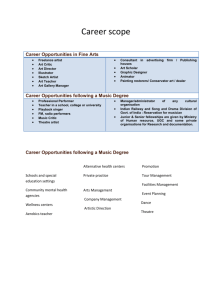A history of criticism, from postmodernism to Plato
advertisement
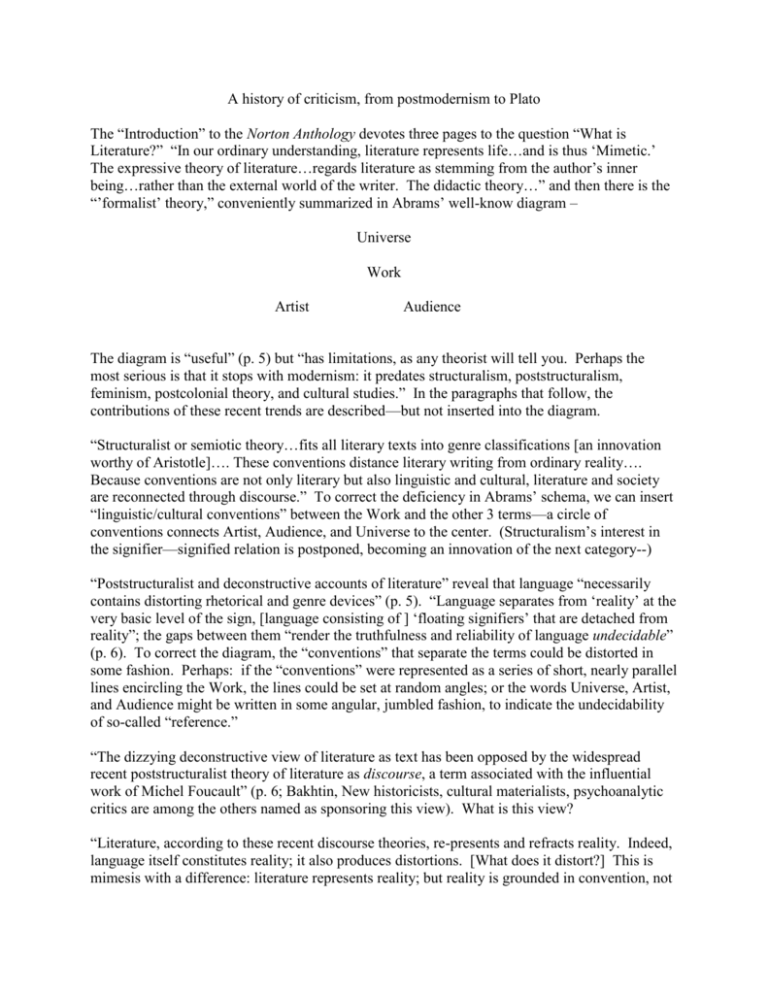
A history of criticism, from postmodernism to Plato The “Introduction” to the Norton Anthology devotes three pages to the question “What is Literature?” “In our ordinary understanding, literature represents life…and is thus ‘Mimetic.’ The expressive theory of literature…regards literature as stemming from the author’s inner being…rather than the external world of the writer. The didactic theory…” and then there is the “’formalist’ theory,” conveniently summarized in Abrams’ well-know diagram – Universe Work Artist Audience The diagram is “useful” (p. 5) but “has limitations, as any theorist will tell you. Perhaps the most serious is that it stops with modernism: it predates structuralism, poststructuralism, feminism, postcolonial theory, and cultural studies.” In the paragraphs that follow, the contributions of these recent trends are described—but not inserted into the diagram. “Structuralist or semiotic theory…fits all literary texts into genre classifications [an innovation worthy of Aristotle]…. These conventions distance literary writing from ordinary reality…. Because conventions are not only literary but also linguistic and cultural, literature and society are reconnected through discourse.” To correct the deficiency in Abrams’ schema, we can insert “linguistic/cultural conventions” between the Work and the other 3 terms—a circle of conventions connects Artist, Audience, and Universe to the center. (Structuralism’s interest in the signifier—signified relation is postponed, becoming an innovation of the next category--) “Poststructuralist and deconstructive accounts of literature” reveal that language “necessarily contains distorting rhetorical and genre devices” (p. 5). “Language separates from ‘reality’ at the very basic level of the sign, [language consisting of ] ‘floating signifiers’ that are detached from reality”; the gaps between them “render the truthfulness and reliability of language undecidable” (p. 6). To correct the diagram, the “conventions” that separate the terms could be distorted in some fashion. Perhaps: if the “conventions” were represented as a series of short, nearly parallel lines encircling the Work, the lines could be set at random angles; or the words Universe, Artist, and Audience might be written in some angular, jumbled fashion, to indicate the undecidability of so-called “reference.” “The dizzying deconstructive view of literature as text has been opposed by the widespread recent poststructuralist theory of literature as discourse, a term associated with the influential work of Michel Foucault” (p. 6; Bakhtin, New historicists, cultural materialists, psychoanalytic critics are among the others named as sponsoring this view). What is this view? “Literature, according to these recent discourse theories, re-presents and refracts reality. Indeed, language itself constitutes reality; it also produces distortions. [What does it distort?] This is mimesis with a difference: literature represents reality; but reality is grounded in convention, not nature, and it is subject to illusion. Similarly, discourse theorists affirm that literature expresses the inner life of authors, but life is understood to be a regulated social phenomenon…” (6). The following pages suggest possible conversions of universe, artist, and audience into discursive entities: the universe can be “ideology”; and “personhood (or subjectivity) [eg. that of artist and audience] involves three things: the operations of our unconscious, the effects of surrounding sociohistorical forces, and the multiple subject positions that each individual occupies” (28). Correction of the diagram to align it with this theory of discourse requires a topological operation that I may not be able to describe. First: inscribe ideology, the unconscious, and sociohistorical forces on the perimeter, around the Universe, Artist, and Audience. These words should be written in some appropriately fragmentary fashion. Clear some space at the center of Abrams’ diagram. Assume that the diagram is a circle. Now turn it inside out, so that ideology/unconscious/sociohistorical forces are at the center, surrounded by artist/universe/audience, with an outer circle of refracting/distorting language and conventions, and literary texts (the former center) scattered in the galactic space beyond. This operation doesn’t create the precise figure represented by the theoretical description, but it may convey the idea: the reality is language—or ideology and the unconscious (structured as a language). To repeat: “Language itself constitutes reality…. Literature represents reality; but reality is grounded in convention, not nature.” It appears that these post-modern theories have succeeded in reconstructing Platonism. Instead of the Ideas, we have Language constituting reality—a reality not organized through “participation” in the Ideas, but in replication of the conventions that govern its (delusive) status as “reality.” Language is the reality, and the people chained in Plato’s cave are hypothetical constructs…. I had wondered, naively, why words such as “fiction” and “imagination” didn’t appear anywhere in the pages discussing “What is Literature?” But from this naiveté, I gained what may be a belated insight: the distinction between fiction and non-fiction is not only irrelevant, but impossible in the theoretical position here presented. Any distinction between the two would pose a challenge to the theory. On the other hand, if literature incorporates conventions that distort its representation of a linguistically (ideologically, unconsciously constituted) “reality,” it is, once again, at third remove from Truth. This presentation of contemporary arguments in favor of Idealism provides, in one sense, an ideal starting-point for a history of criticism that begins with Plato.
